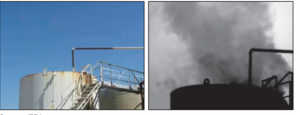This blog post was written by Tomás Carbonell, Attorney in EDFs Climate and Air Program. Jack Nelson, a legal intern in EDF’s Washington, D.C. office, assisted in the preparation of this post.
The U.S. Environmental Protection Agency put in place last year important standards to protect public health and reduce emissions of harmful air pollutants from oil and gas storage tanks and related equipment. EPA wisely issued those standards after thousands of comments were provided by concerned public advocates for cleaner air. With oil and gas production expanding quickly, tough standards are needed now more than ever to assure air quality protections for people living near oil and gas producing areas.
Recently, EPA proposed changes to standards for storage tanks in the oil and gas sector — a major source of pollutants that contribute to smog, climate change, and other threats to public health and the environment. These changes would undermine the progress made thus far and would lead to significant and unnecessary increases in emissions of volatile organic compounds, methane, and other pollutants. EDF is urging EPA not to finalize the proposed revisions in comments filed together with Clean Air Council, Clean Air Task Force, Environmental Integrity Project, Natural Resources Defense Council and Sierra Club.
Proposed Changes to the Storage Tank Standards
Last fall, oil and gas industry groups petitioned EPA for changes to the storage tank standards, arguing that less stringent standards are needed because these tanks are even more numerous and emit at higher levels than EPA predicted when it was developing the current standards. If anything, this new information indicates the need to maintain or strengthen health-protective standards for storage tanks. EPA’s proposed changes would instead: Read More















